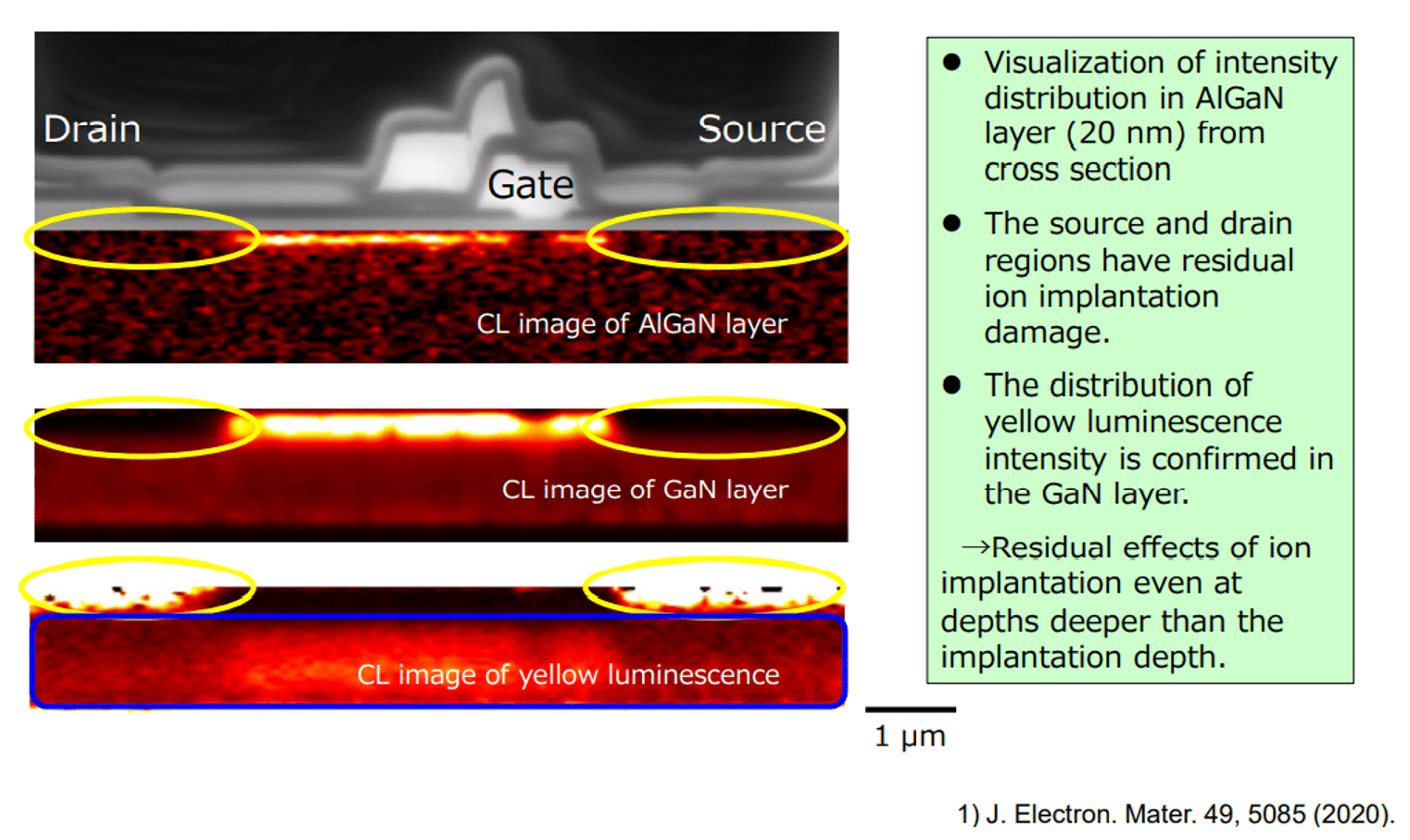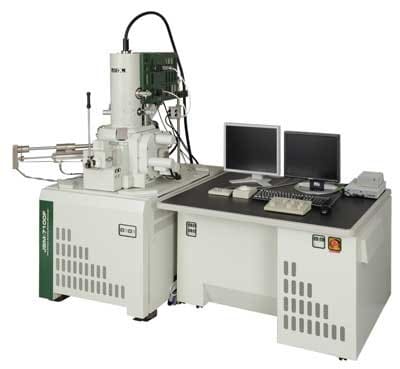The electrons from a scanning electron beam of an SEM are used to excite electrons across the energy gap of a semiconductor. When these electrons relax back to their resting state a photon can be emitted and cathodoluminescence (CL) measures the spectral energy and intensity of the emitted photons. In many ways it is like photo-luminescence except for that it uses an electron beam to excite the material as opposed to using a beam of light for the excitation source.
Using the electron beam in a scanning electron microscope as a non-destructive, broadband optical excitation source, cathodoluminescence analysis achieves the same nano-scale spatial resolution as scanning electron microscopy (SEM) techniques. A specialized detector mounted in the sample chamber measures the emitted photons, whose energies can be analyzed and mapped to probe fundamental and functional properties of the material.
Cathodoluminescent photons are generated from a variety of coherent and incoherent processes. They can thus be used for both functional optical analysis and to study the electronic structure of solid-state materials. In particular, CL analysis is performed to investigate bandgaps and defects (which lower the CL intensity) in semiconductors, where it can be used to generate hyperspectral light emission maps that represent the local density of states. It is also seeing more recent use in metallic nanoparticle analysis, due to recent advances in detector technologies that facilitate greater collection efficiency from samples that intrinsically produce limited cathodoluminescence signal.



